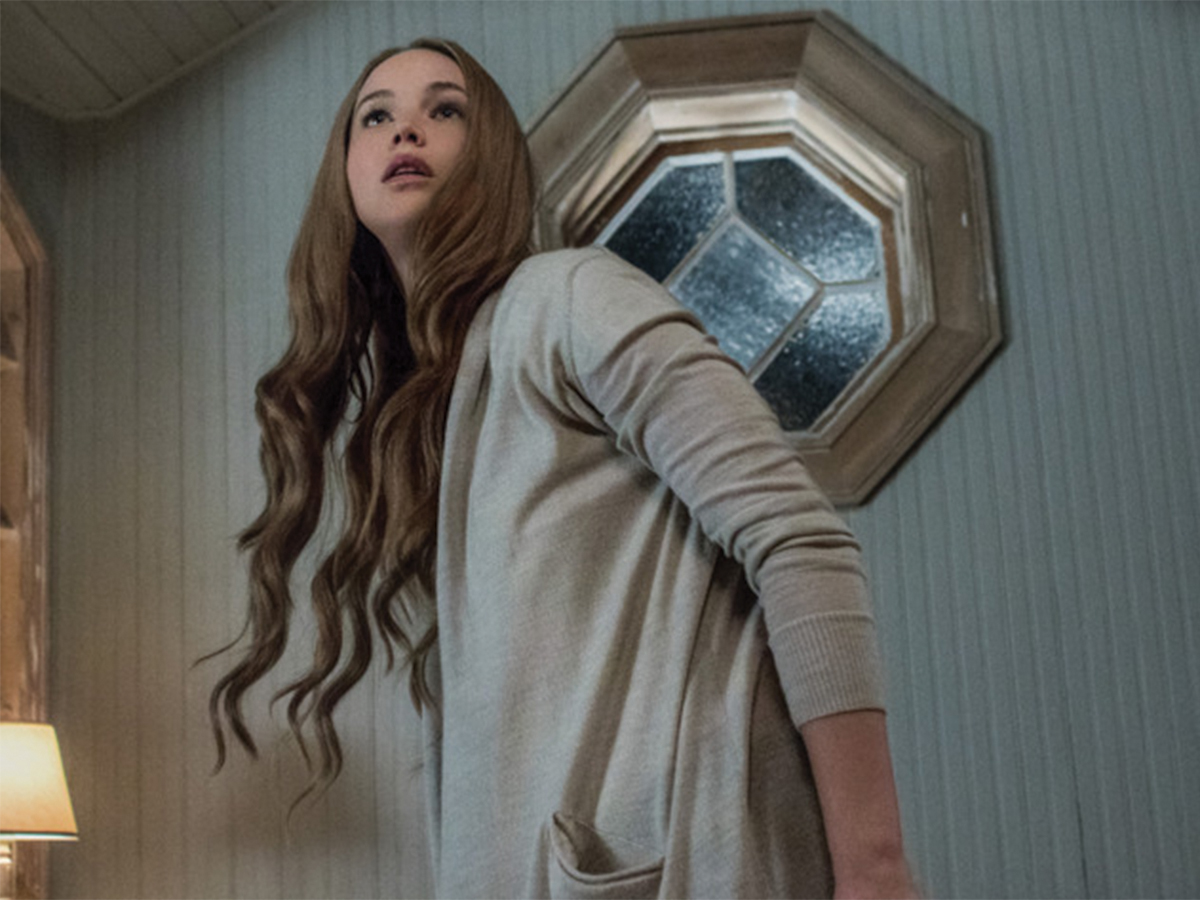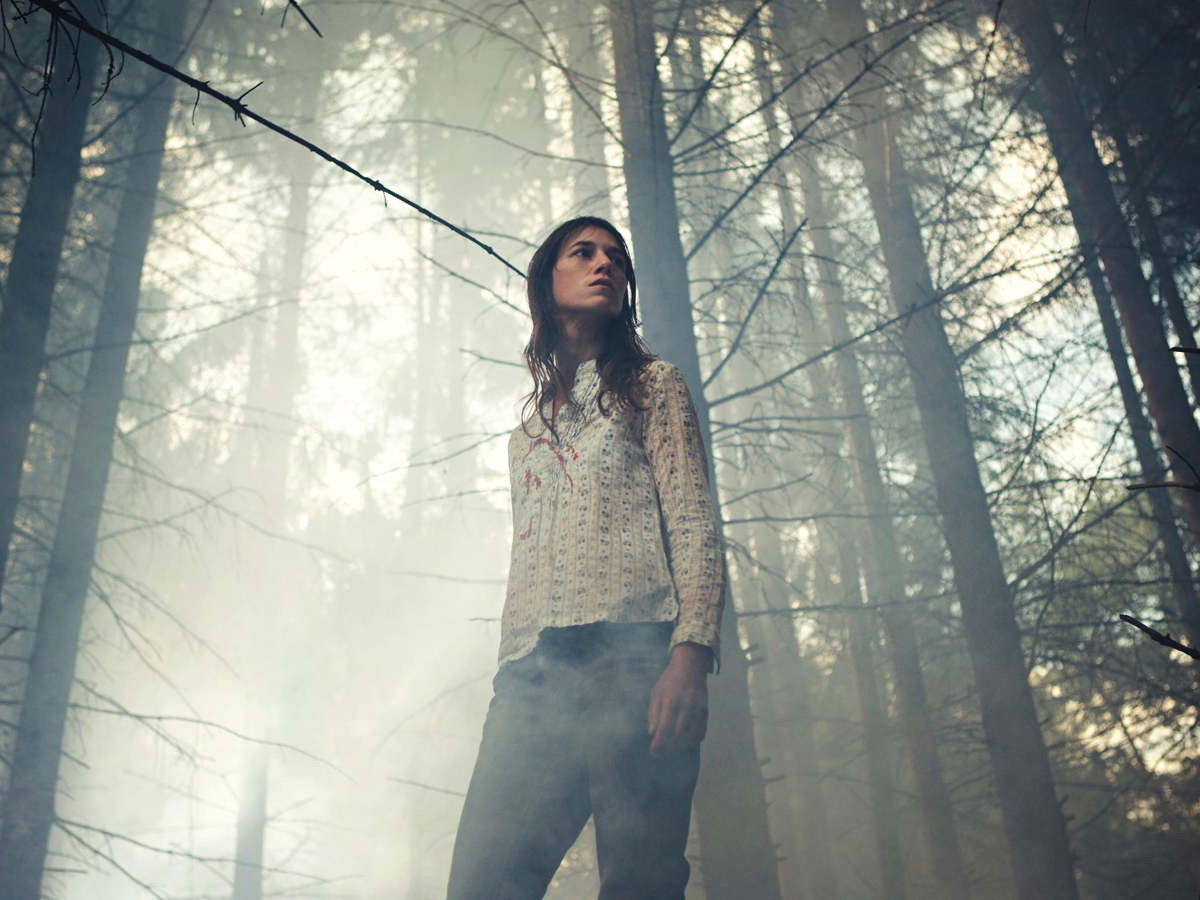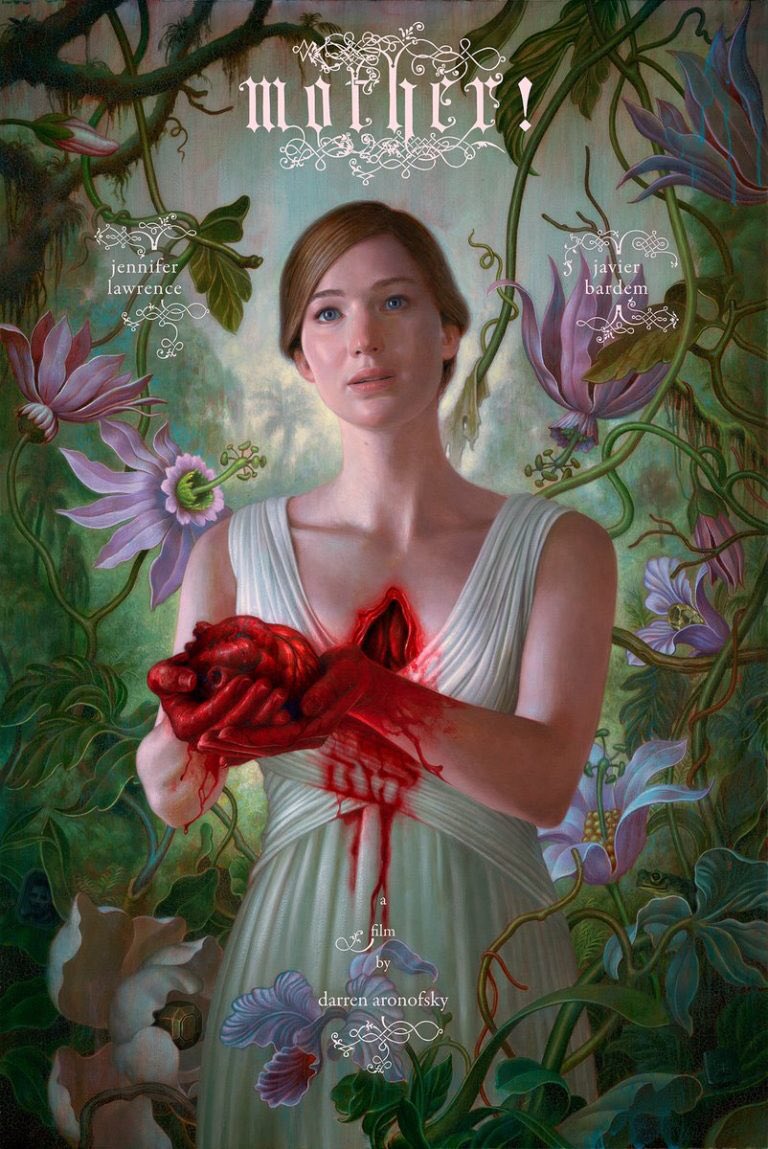This article uses two films as catalysts to discuss allegorical storytelling in film. Thusly, spoilers for Darren Aronofsky’s “mother!” and, to a lesser extent, Lars von Trier’s “Antichrist,” ensue.
The unspoken standard that underlies Hollywood’s method of film distribution leaves no air for high-risk filmmaking, ultimately saturating the market with palatable products that, more often than not, are guaranteed to earn a healthy sum larger than their budgets at the box office. Films like Darren Aronofsky’s (“Requiem for a Dream,” “Black Swan”) “mother!,” are procedurally released on smaller scales to avoid the risk of tanking their revenue. But once in a blue moon, studios like Paramount Pictures take the road less traveled, foregoing risks in order to “celebrate original filmmaking.” The divisive word of mouth over “mother!” was galvanizing enough to rush filmgoers to the local theater, eager to determine for themselves whether Aronofsky doubled down on his pretensions of high brow filmmaking or if his latest work was the marvel some claimed it to be.
Aronofsky’s “mother!” is, at best, an ambitious psychological horror whose technical feats almost mask its obtuse storytelling. In more than a few ways, it recalls Lars von Trier’s 2009 film, “Antichrist,” as well as Andrzej Zulawski’s 1981 “Possession” (“the best break-up movie ever made” per Max Landis). Both films before Aronofsky’s approach the genre in unconventional and humanizing ways before dancing with audience expectations in startling, yet effective, ways. Specifically, the parallels between “Antichrist” and “mother!” are striking enough that viewing both in close succession of one another helps to provide a clearer frame of reference for how filmmakers can create daring arthouse films without alienating viewers via lack of plot.
“mother!” can’t be that bad, can it?

No, it’s not. In fact it’s a great film suffocated by its creators ego — not unlike Jennifer Lawrence’s character in the film. The first half successfully establishes an intriguing narrative set in a mansion doubling as Eden about a woman (Jennifer Lawrence) whose husband (Javier Bardem), a writer, refuses to say no to uninvited guests. Where it falters is in its second half, which piledrives its thoroughly engaging plot in the interest of untethering its footing in pseudo-reality and falling to surrealist shock value and shallow symbolism.
Adding to the film’s failure is Aronofsky’s disregard for subtlety and open interpretation, opting instead to divulge the film’s entire essence in interviews. Imagine my surprise leaving the theater, stunned but elated at what I then believed was a densely layered film oscillating between themes of addiction and cyclical existences — only to read Aronofsky essentially state “yeah it’s like a movie about mother nature and the bible and shit.”
In hindsight, the film I thought I saw that day wasn’t the one I actually saw; my limited biblical comprehension blinded me to its gauche retelling of stories like Adam and Eve and Cain and Abel. But crediting a character as Him, with every other character lacking any proper name? Not fooling anyone.
What’s “Antichrist” got to do with anything?

A lot, actually. It’s easy to watch a film like “mother!,” leave confused and immediately respond with praise simply by virtue of confusion. Pull the curtains, though, and you got a man on a vintage typewriter, sipping an IPA and replicating the stories of the Bible onto a screenplay, saying nothing new or challenging.
“Antichrist” is concerned with how a husband, He (Willem Dafoe), and wife, She (Charlotte Gainsbourg), cope with the grief brought on by the death of their toddler son. Between the two films, the surface-level similarities are plentiful. Both films follow protagonists with generic names, with the female protagonist entering a state of mania owed to some degree by their male partners; both films take place in an area surrounded by greenery serving as a metaphor for the garden of Eden; both films make reference to the bible; both films delight in shocking the audience with scenes some would label obscene.
But what’s more important is how each film’s director decides to go about telling their metaphorically dense stories. Like “mother!,” “Antichrist’s” second half is not fully lucid, yet it isn’t seeped in allegorical storytelling as to dissociate its plot from its artistic vision.
So what does it do better?
“Antichrist’”s second half is not fully lucid, yet it isn’t seeped in allegorical storytelling as to dissociate its plot from its artistic vision
Chiefly, the task of following a story to its conclusion. “Antichrist” is a story about a man and a woman who penetrate the deepest reaches of Eden and discover the frailty of human nature. It’s about depression and it’s about misogyny and it’s about perspective. It isn’t an easy film to consume by any stretch of the imagination — recommendations should arrive with a disclaimer of its gruesome depictions of violence, most notoriously that which is aimed at genitals in full view of the camera. It’s vile yet beautiful, pretentious and rich at once.

“mother!” isn’t really about anything. It’s a retelling of biblical stories whose aim is to tell its audience, slackjawed, that “mother earth good, human bad.” When it unloads its symbolism, it’s disguised about as well as Von Trier disguising his absurdity (read: insanity). Granted, it’s a visual and sonic tour de force for Aronofsky and his crew; denying the director’s ability to create tension is simply a lie, and the mystery surrounding a recurring powdery substance is reason alone for some degree of credit. But substantially, it doesn’t have the lasting power of an “Antichrist” or a “Possession.”
A fine balance has to be drawn between the obscure and the tangible for an arthouse film to succeed. A film inextricably bound to its allegory, like “mother!,” leaves little for audiences to appreciate and even less space for interpretation in its rigid symbolism.
What’s the deal with the three beggars in “Antichrist”? Don’t ask von Trier, because he won’t tell you; follow the clues and trust your intuition and find substance in the abstract. What’s the deal with the baby in “mother!”? It’s Jesus. Donezo, no personal resonance, no reason to revisit and reconfigure the story to view that aspect differently. Cut and dry, it’s Jesus Christ. Where’s the fun in that?
The purpose of using the Bible — or any source, text or otherwise — to aid a screenplay should be to birth new ideas, not recycle them. In all its excess, “mother!” is devoid of a single challenging or original thought, instead having its narrative as a stand-in for the bible. Its end goals include pointing out religion’s place in a history of violence and to preach to the choir of environmentalism; all this would suffice, had the film actually told a story that succeeds on its own merits without being ball-and-chained to its painfully hamfisted allegory.
So what?

Arthouse cinema doesn’t waive the right to tell interesting stories. Some of the greatest, most timeless arthouse films (“Stalker,” “Mulholland Drive,” “Persona”) owe their complexity to their richly detailed stories, without bringing too much attention to symbols and allusions. There’s beauty in mystery and to disclose the “true meaning” of a piece is an affront to a viewer’s intuition and perseverance. But without a story proper, films like “mother!,” in all its feigned complexity, will not stand the test of time.








